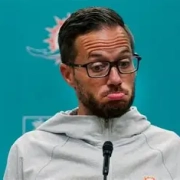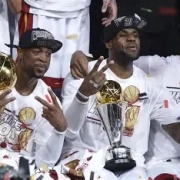Breaking Down the Pod: Can the Miami Heat Salvage Terry Rozier?
 Breaking Down the Pod: Episode 2
Breaking Down the Pod: Episode 2
 Can the Miami Heat Salvage Terry Rozier?
Can the Miami Heat Salvage Terry Rozier?

Subscribe to Five on the Floor on Spotify, Apple Podcasts, and YouTube.
Podcast Hosts: Ethan Skolnick & Brady Hawk
Sponsors: InsuranceByLinnette.com, PrizePicks.com (use code: five)
Welcome back to Breaking Down the Pod, where I pull out the top insights and debates from Five on the Floor episodes—and add my take. This pod: Terry Rozier, and whether the Heat can salvage him after one of the worst drop-offs we’ve seen in recent team and NBA history.
Rozier arrived in Miami to real expectations. The Heat gave up a first-round pick and the financial flexibility of Kyle Lowry’s expiring contract to bring him in. What they got instead? A neck injury, a scandal, a loss of rhythm, and a version of Rozier that simply didn’t fit in Miami’s ecosystem.
 The Pod’s Premise
The Pod’s Premise
Both Ethan and Brady are clear:
Rozier’s time in Miami hasn’t just been bad—it’s been historically bad and unlikely to recover in this setting.
“You’re not getting an asset back for Terry Rozier at this point.” — Ethan Skolnick
They tried to brainstorm Heat players who’ve had similar bounce-back stories—Duncan Robinson was mentioned, and his situation was identified as a shooting slump—but the consensus was clear: Rozier’s fall was deeper, and his path to recovery less likely.
 Key Points from Ethan & Brady
Key Points from Ethan & Brady
 The Role Was Maximized (To a Fault)
The Role Was Maximized (To a Fault)
-
Spoelstra gave Rozier every chance. He was slotted into a maximized role, even when the fit didn’t make sense.
-
Ethan suggests it looked like Spo was hoping Rozier would figure it out—but that never materialized.
 It Was a Mistake—And the Front Office Knows It
It Was a Mistake—And the Front Office Knows It
“It was a mistake trade. They know it was a mistake trade. It’s not a mistake you can repeat.” — Ethan
-
Both hosts agree: this wasn’t a situation that can be repeated or justified again.
-
Ethan even cautions against making the same mistake in future deals: “Don’t go get scorers from bad teams.”
 Rozier’s a Good Teammate, Not a Locker Room Issue
Rozier’s a Good Teammate, Not a Locker Room Issue
-
Brady emphasizes it’s not urgent to move him.
-
Rozier has been liked in the locker room and isn’t a distraction—but his role is shrinking regardless.
 Ideal Outcome? Include Him in a Bigger Deal
Ideal Outcome? Include Him in a Bigger Deal
-
Brady floats another scenario: if the Heat make a bigger trade (like for a star), Duncan Robinson becomes the salary filler, and Rozier ends up as the backup PG by default “he identifies this as the only “weird” scenario and the Heat should see what comes at the deadline.
-
Still, Brady is doubtful:
“I don’t see him honestly getting a major role with this team.”
 My Take
My Take
Terry Rozier was once a great scorer at all levels—and when he arrived in Miami, it looked like he might elevate their offense for good.
And for a moment, he did.
Last season, after the trade from Charlotte, Rozier gave Miami a jolt—averaging 16.4 points and 4.6 assists in 31 games—before suffering a neck injury that sidelined him for the playoffs. The hope was he’d return stronger, settle in, and become the Heat’s missing offensive gear.
Instead, 2024-25 went completely sideways.
Rozier came into the year healthy, but his rhythm never followed. He’s looked completely out of sync in Miami’s offense, struggling to mesh with Tyler Herro and Bam Adebayo. His three-point shooting—a career strength—has cratered, dropping from a combined 36.6% last season to under 30% this year. His decision-making hasn’t helped, as he’s frequently forced shots and disrupted Miami’s offensive flow.
The stats tell a clear story:
-
2023-24 (MIA): 16.4 PPG, 4.6 AST, 37.1% 3PT
-
2024-25 (MIA): 10.6 PPG, 2.6 AST, 29.5% 3PT on 25.9 minutes per game
That’s not just a dip. That’s a collapse. And when you look to his stats in Charlotte, its inexplicable.
And unfortunately, it’s turned Rozier into exactly what the Heat can’t afford: a high-usage guard who’s hurting their half-court execution and dragging down the second unit. Watch their loss to Cleveland on TNT (and many more games)—it’s all there in slow motion. Stagnant offense. Tough shots. No flow.
What’s wild is how fast this happened. Just a year ago, the trade was universally praised. Rozier was supposed to be a dynamic shot-maker and secondary creator. Now? He’s viewed internally and externally as a contract to move, not a core piece.
I agree with Brady: it’s not urgent to dump Rozier, but the longer he’s in this limbo role, the more it reinforces the mistake. His Heat tenure isn’t beyond repair—he’s not toxic, he’s not washed—but it’s very likely going to take a new team to reboot him.
If the Heat can fold him into a larger trade, great. If not, they may have to wait this out—but hoping Rozier turns back into a winning player in this system is not realistic at this point.
 The Numbers
The Numbers
| Season | Team | GP | MPG | PPG | APG | 3P% | FG% | Role |
|---|---|---|---|---|---|---|---|---|
| 2022-23 | CHO | 63 | 35.3 | 21.1 | 5.1 | 32.7% | 41.5% | Primary |
| 2023-24 | CHO | 30 | 35.5 | 23.2 | 6.6 | 35.8% | 45.9% | Focal scorer |
| 2023-24 | MIA | 31 | 31.5 | 16.4 | 4.6 | 37.1% | 42.3% | Secondary |
| 2024-25 | MIA | 64 | 25.9 | 10.6 | 2.6 | 29.5% | 39.1% | Inconsistent |
Rozier’s efficiency drop, and role reduction aren’t just signs of decline—they’re signals that he hasn’t found comfort or clarity in this Miami system.
 Final Thought: The Yips?
Final Thought: The Yips?
Honestly, I have no real explanation for Rozier’s fall-off. The closest thing I can compare it to is the yips—a mental block that affects athletes across all sports. Some examples include Chuck Knoblauch, Rick Ankiel, Simone Biles, Brett Maher, and many others. It’s rarely talked about, but it’s very real.
When you see Rozier hesitate, overthink, or force things in ways that feel unnatural, it starts to feel like something mental is weighing him down. And that’s not something you fix with film study or more reps—it takes time, confidence, and usually a change of scenery.
I agree with Ethan and Brady: Rozier may still have game left in him. But if he’s going to find it again, I just don’t see that happening in Miami.
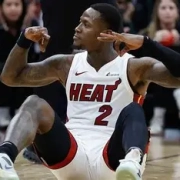
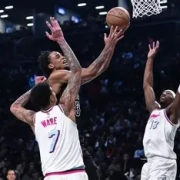
 Podcast Highlights
Podcast Highlights My Take
My Take Final Verdict
Final Verdict Join the Community
Join the Community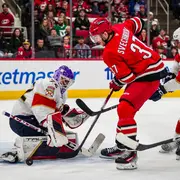
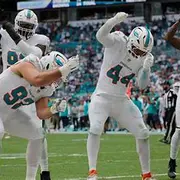
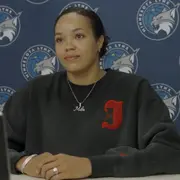
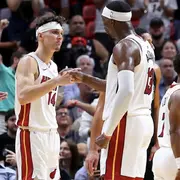
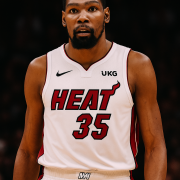

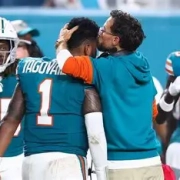
 Miami Dolphins 2025 Game-by-Game Predictions
Miami Dolphins 2025 Game-by-Game Predictions Final Record: 11–6
Final Record: 11–6 Key Wins:
Key Wins: Toughest Losses:
Toughest Losses: Playoff Outlook:
Playoff Outlook: